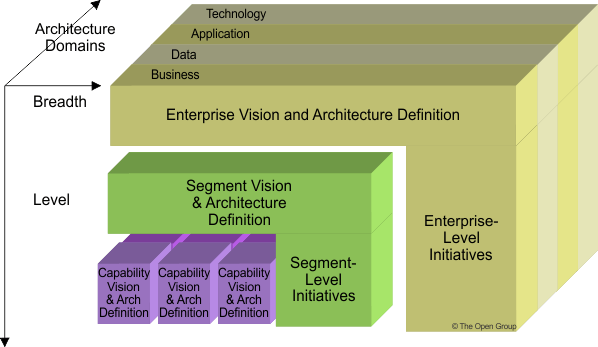Introduction
In the dynamic landscape of modern enterprises, the coexistence of diverse architectures poses both challenges and opportunities. As organizations strive to address specific issues within their domains, the need for a cohesive framework becomes paramount. This article explores the nuanced strategies of architecture integration, navigating the complexities of aligning multiple architectural artifacts. Drawing insights from The Open Group’s perspective, we delve into the dimensions, standards, and common themes that drive the integration process. From defining scope boundaries to leveraging universal models, the journey towards a seamlessly integrated architectural landscape is both a current necessity and a future aspiration.
Architecture integration Strategies
Architecture integration is a critical aspect of managing complex enterprise environments where multiple architectures coexist. The strategies for architecture integration involve aligning different architectural artifacts, addressing common themes, and ensuring consistency across various dimensions. The information provided by the Open Group suggests several key considerations and strategies for architecture integration:
Consistent Frame of Reference:
- Architectures within an enterprise should have a consistent frame of reference. This ensures that they can be considered as a group and allows for the integration of their deliverables.
- The dimensions used to define the scope of a single architecture (e.g., level of detail, architecture domain) are the same dimensions that must be addressed during the integration of multiple architectures.
Scope Boundary Definition:
- Different types of architecture may address specific subsets of issues within an enterprise. Defining the scope boundary is crucial, and the dimensions used for this definition are essential for integration.
- Considerations such as the level of detail, architecture domain, and other relevant factors play a role in determining the scope of each architecture.
Granularity and Level of Detail:
- The granularity and level of detail in each architectural artifact are key factors in integration. Organizations need to ensure that these factors align to facilitate seamless integration.
- At the lower end of the integratability spectrum, current state-of-the-art integration focuses on addressing these factors effectively.
Maturity of Standards:
- Integration is influenced by the maturity of standards for the interchange of architectural descriptions. As standards evolve and become more mature, the integration process can move towards the higher end of the spectrum.
- Standards provide a common language and structure for architectural artifacts, promoting interoperability.
Common Themes and Universal Models:
- Organizations often address common themes such as Service Oriented Architecture (SOA) and integrated information infrastructure. As universal data models and standard data structures emerge, integration becomes more feasible.
- Integration efforts can leverage these common themes and models to establish coherence among different architectures.
Standards Governance:
- Effective standards governance is crucial for reducing the need for manual coordination and conflict resolution during integration.
- Establishing and enforcing standards ensure that architectural artifacts adhere to a set of rules, promoting consistency and interoperability.
Evolution towards High-End Integration:
- Over time, as organizations mature in their architectural practices and standards, integration can move towards the high end of the integratability spectrum.
- The emergence of advanced integration capabilities facilitates a more holistic and comprehensive approach to managing diverse architectures.

Summary
Successful architecture integration requires careful consideration of scope, granularity, standards, and common themes. As standards mature and common models emerge, organizations can progress towards more advanced integration approaches while maintaining effective standards governance.
Achieving synergy among disparate architectures requires a consistent frame of reference, echoing across dimensions such as granularity, level of detail, and architecture domain. The integration spectrum, depicted in Figure above, emphasizes the importance of addressing these dimensions.
Key considerations include the maturity of standards, the emergence of universal models, and the governance of integration efforts. As organizations collectively embrace common themes like Service Oriented Architecture (SOA), the trajectory towards high-end integration becomes more attainable. This article envisions a future where effective standards governance minimizes manual coordination, paving the way for a harmonized enterprise architectural landscape.